Some trees do more than just look pretty — they turn your yard into a busy hangout for birds, butterflies, and other pollinators. If you’ve ever watched a hummingbird hover near a bloom or spotted a monarch drifting between branches, you know how much life the right tree can bring to a space.
Accent trees that flower are especially good at pulling double duty. They add color and structure to the garden, while also serving up nectar, seeds, or shelter for wildlife. We’ve gathered 15 that are known for catching the attention of winged visitors — and chances are, a few of them will catch yours too.
Eastern Redbud
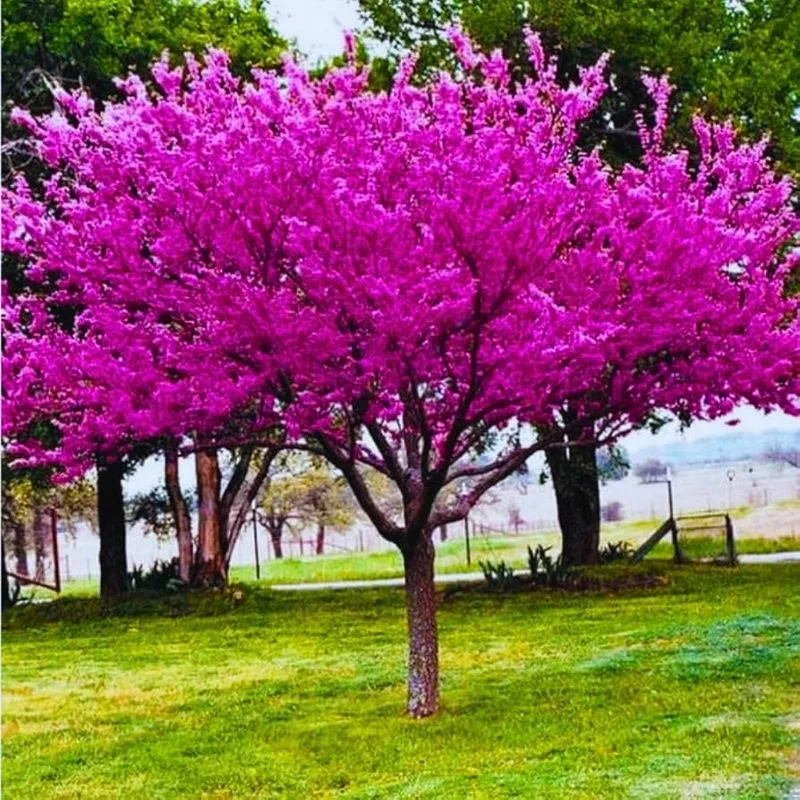
In early spring, the Eastern Redbud bursts forth with a display of pink blooms that rival even the most vibrant sunrise. The heart-shaped leaves follow, creating a lush canopy that offers a cozy haven for birds. This tree’s visual allure is matched by its ability to attract butterflies, making it a delightful addition to any garden. Its compact size makes it ideal for small spaces, while its resilience ensures it thrives with minimal care. Whether lining a walkway or standing alone as a focal point, the Eastern Redbud is a true testament to nature’s artistry.
Magnolia

The Southern Magnolia’s grandiose blossoms command attention, their creamy-white petals exuding a fragrance that captivates both humans and wildlife. Butterflies and birds are irresistibly drawn to its inviting scent, while its evergreen leaves provide year-round greenery. The tree’s majestic presence makes it a showstopper, whether in full bloom or simply standing tall in a landscape. Known for its durability and elegance, the Magnolia is as much a symbol of southern charm as it is a vital part of a thriving ecosystem. Its beauty and allure ensure it remains a garden favorite.
Dogwood
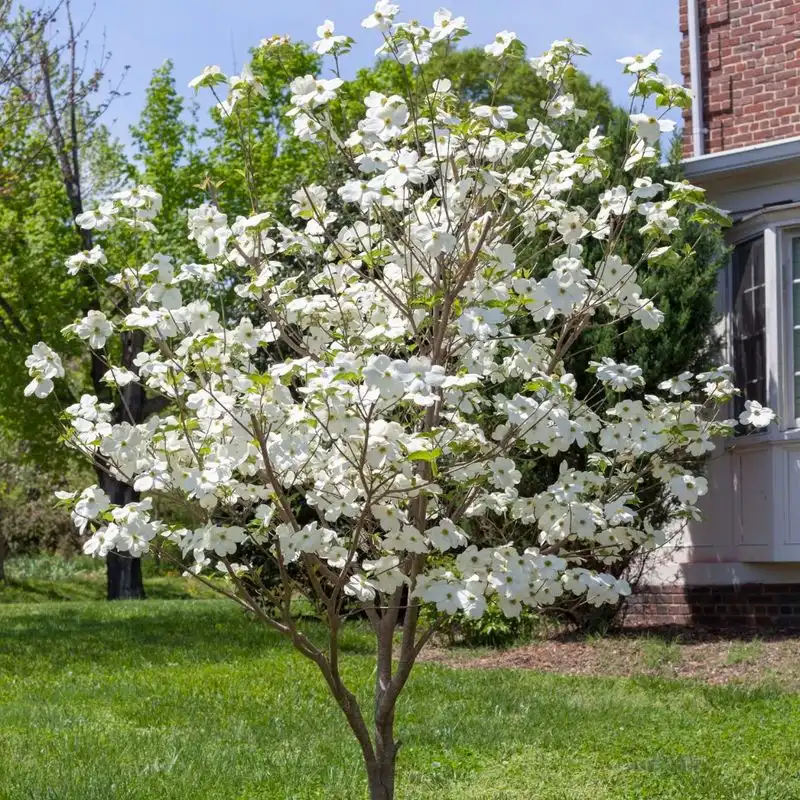
Dogwood trees offer a seasonal symphony of color, starting with their delicate blossoms in shades of white and pink. These vibrant blooms are a clarion call to butterflies, while the tree’s strong, horizontal branches offer perfect perches for birds. As the seasons change, the tree continues to charm with fiery autumn foliage and bright red berries that sustain wildlife through winter. Its ability to thrive in various conditions makes it a versatile choice for gardens. With every season, the Dogwood reinvents itself, ensuring your garden is always alive with activity.
Cherry Blossom
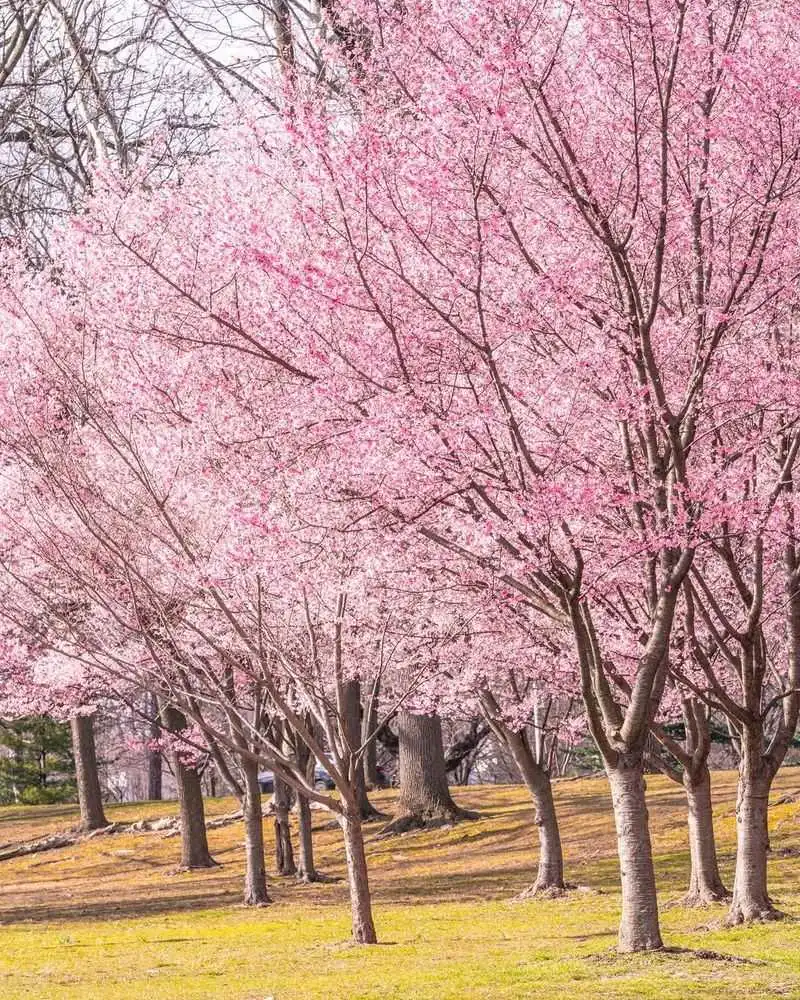
Few trees capture the fleeting beauty of spring quite like the Cherry Blossom. With petals as soft as a whisper and colors that blush at dawn’s first light, this tree enchants all who pass by. Butterflies dance among its branches, while birds find refuge in its gentle shade. Despite its elegant appearance, the Cherry Blossom is a symbol of resilience, flourishing in diverse climates. Widely celebrated during festivals, it’s a reminder of life’s transient beauty. Planting a Cherry Blossom promises a garden filled with wonder and joy each spring.
Crabapple

Crabapples are renowned for their enchanting springtime display, where branches are adorned with clusters of vibrant red and white flowers. These blooms form a picturesque backdrop that’s irresistible to butterflies and a haven for songbirds. As autumn approaches, the tree yields small, colorful fruits that provide nourishment for wildlife. Its adaptability to urban environments and visual appeal make it an excellent choice for gardeners seeking both beauty and biodiversity. With each season, the Crabapple offers new reasons to admire its charm, making it a perennial favorite.
Crepe Myrtle
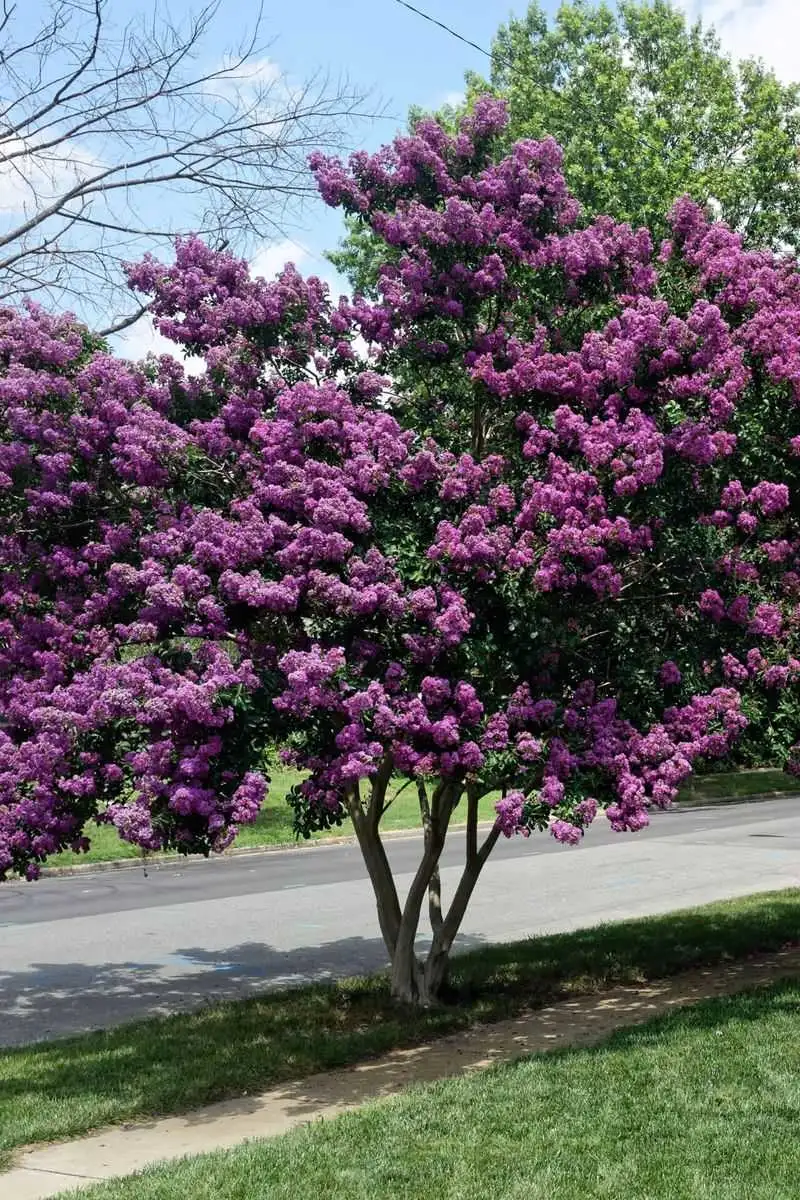
Crepe Myrtles are a celebration of color and texture, with their summer blooms painting the landscape in vibrant hues of pink, red, and purple. These flowers are a magnet for butterflies, while the tree’s smooth, peeling bark adds an intriguing visual element. Known for its drought tolerance and long blooming season, the Crepe Myrtle is a resilient addition to any garden. Its ability to thrive in hot climates makes it a popular choice in southern regions. As the days grow longer, the Crepe Myrtle ensures your garden remains a lively and colorful retreat.
Ornamental Pear
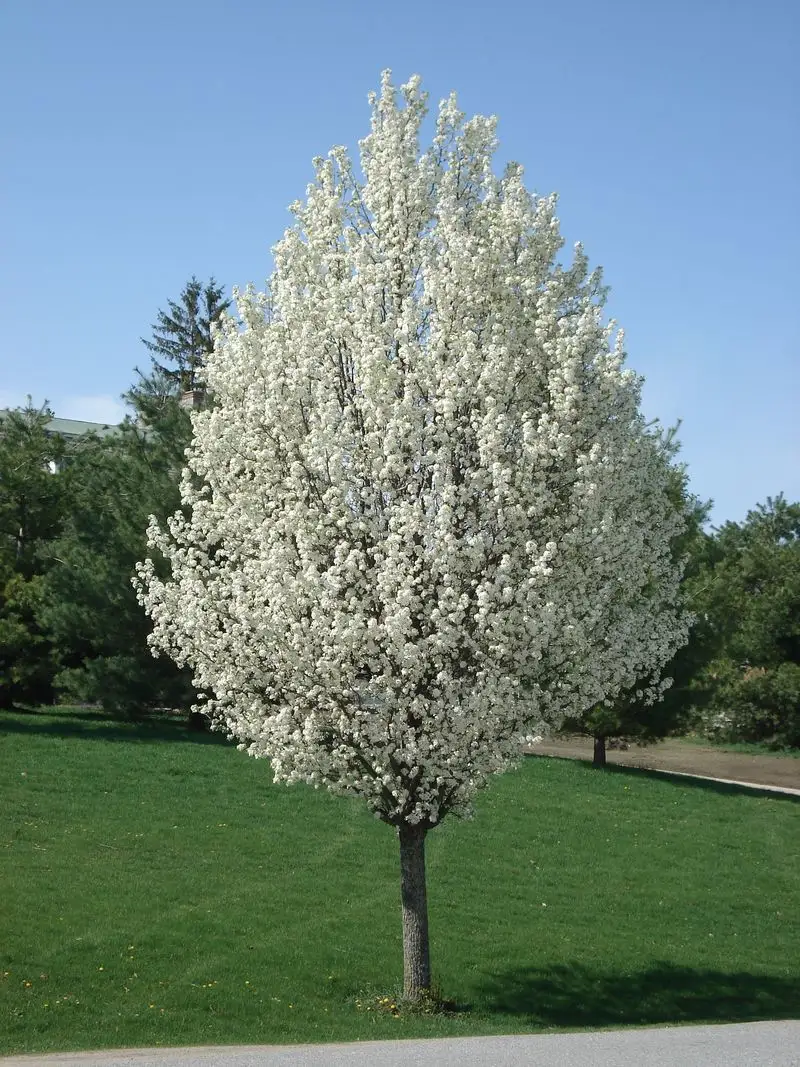
Ornamental Pear trees usher in spring with delicate white blossoms that blanket the tree in floral splendor. The blossoms’ subtle fragrance attracts butterflies, while birds find refuge among its branches. As the seasons shift, the tree’s leaves turn a stunning shade of red, enhancing its year-round appeal. Known for their adaptability and low maintenance, Ornamental Pears are a practical yet beautiful choice for urban landscapes. Their ability to withstand harsh conditions while providing seasonal interest makes them a reliable favorite for gardeners seeking elegance without effort.
Lilac
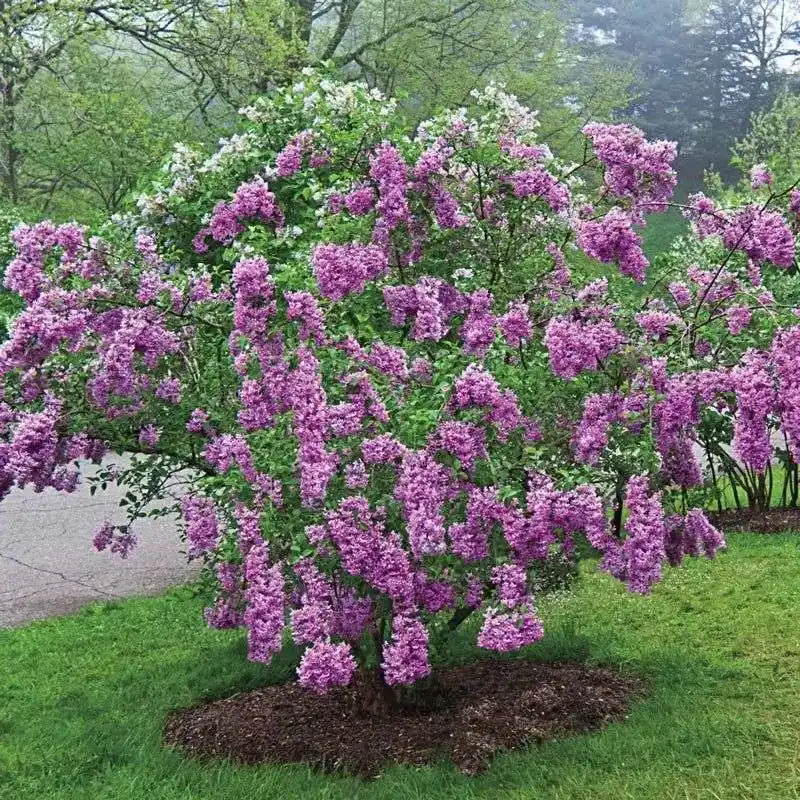
Lilacs are synonymous with the sweet scent of spring, their clusters of purple flowers attracting butterflies from miles around. The intoxicating fragrance and vibrant blooms make them a beloved choice for garden enthusiasts. Birds find solace in their dense foliage, creating a lively ecosystem. Despite their delicate appearance, Lilacs are robust and can thrive in various climates. Their ability to bloom year after year with minimal care is a testament to their resilience. Planting a Lilac promises a garden filled with the gentle hum of nature’s activity and a burst of color and fragrance each spring.
Hawthorn
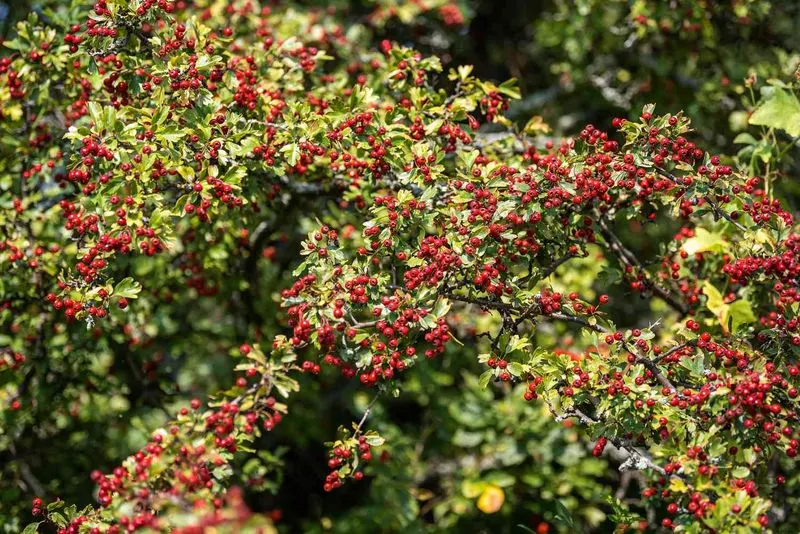
Hawthorns are a staple of the countryside, known for their rustic charm and small, white flowers that bloom in late spring. These blossoms are a magnet for butterflies, while the tree’s thorny branches provide a safe haven for birds. As autumn arrives, the Hawthorn’s red berries offer a vital food source for wildlife, ensuring your garden is bustling with activity. Their adaptability to different soil types and conditions makes them a versatile choice for any landscape. With each passing season, the Hawthorn’s timeless beauty and ecological value become increasingly apparent.
Mimosa
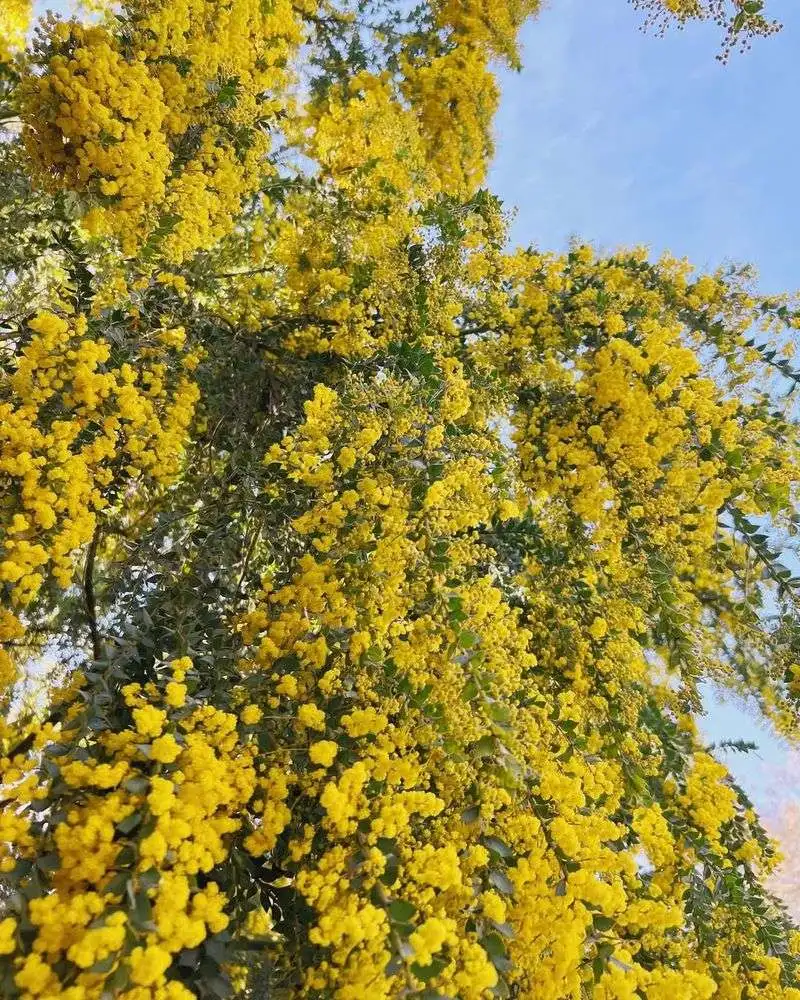
The Mimosa tree’s feathery blooms are a sight to behold, their fluffy pink flowers attracting butterflies in droves. With leaves that fold at night, the Mimosa adds an element of intrigue and magic to your garden. This tree thrives in warm climates, its quick growth and drought tolerance making it a practical choice for impatient gardeners. As summer unfolds, the Mimosa’s vibrant display promises to keep your landscape lively and enchanting. Its unique characteristics and ability to create a tropical feel, even in temperate zones, make it a standout choice for garden enthusiasts.
Sourwood
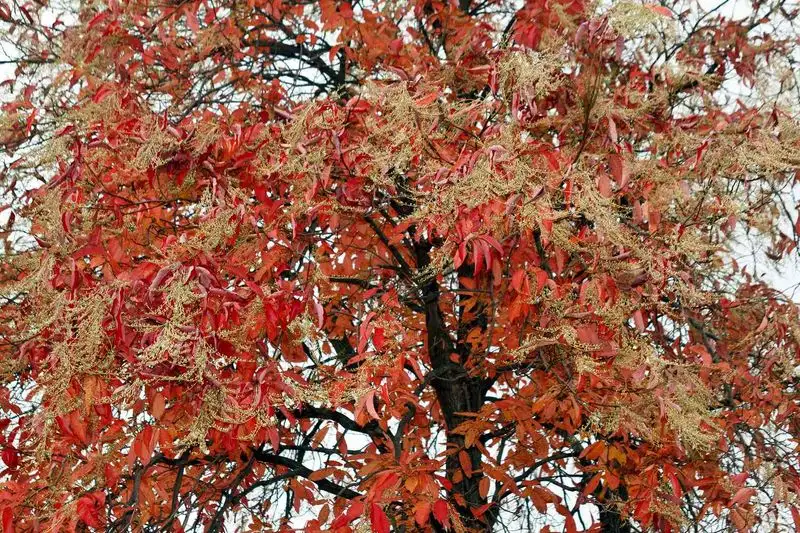
Sourwood trees are celebrated for their distinctive, bell-shaped flowers that dangle gracefully from branches, creating an elegant cascade of white. These blooms are particularly attractive to butterflies, while birds enjoy the shelter provided by the tree’s dense foliage. Known for its striking red fall color, the Sourwood offers year-round visual interest. Its adaptability to different climates and soil types makes it an excellent choice for diverse landscapes. Planting a Sourwood promises a garden filled with the harmonious buzz of pollinators and the vibrant hues of changing seasons, ensuring continual delight.
Tulip Tree

The Tulip Tree is an architectural marvel, its towering presence crowned with large, yellow-green flowers that resemble tulips. These striking blooms attract hummingbirds, while the tree’s height makes it a favorite perch for songbirds. With its rapid growth and impressive stature, the Tulip Tree is a testament to nature’s grandeur. Known for its vibrant autumn foliage, it adds seasonal interest to any landscape. Despite its size, the Tulip Tree is remarkably easy to care for, making it an accessible choice for gardeners seeking to add a touch of drama and beauty to their outdoor spaces.
Red Buckeye

The Red Buckeye is a beacon of vibrant color, its red flowers attracting both butterflies and hummingbirds with ease. As spring transitions into summer, this tree’s lush foliage offers a refreshing canopy. Known for its adaptability and compact size, the Red Buckeye is perfect for small gardens or as an accent in larger landscapes. Its resistance to pests and adaptability to various soil conditions make it a practical choice for gardeners. The Red Buckeye’s unique floral display and ability to attract wildlife ensure it remains a favorite for those looking to enhance their garden’s natural allure.
Serviceberry

Serviceberry trees are a feast for the senses, offering delicate white blossoms in spring that attract butterflies and birds alike. As the flowers give way to small, sweet berries, the tree becomes a hub of activity for wildlife. Its stunning fall foliage adds a splash of color to any garden, ensuring year-round appeal. Easy to grow and maintain, Serviceberries thrive in a variety of climates and soil conditions. Whether planted as a standalone specimen or in a group, the Serviceberry brings a touch of elegance and vitality to the landscape, delighting observers throughout the seasons.
Whirling Willow
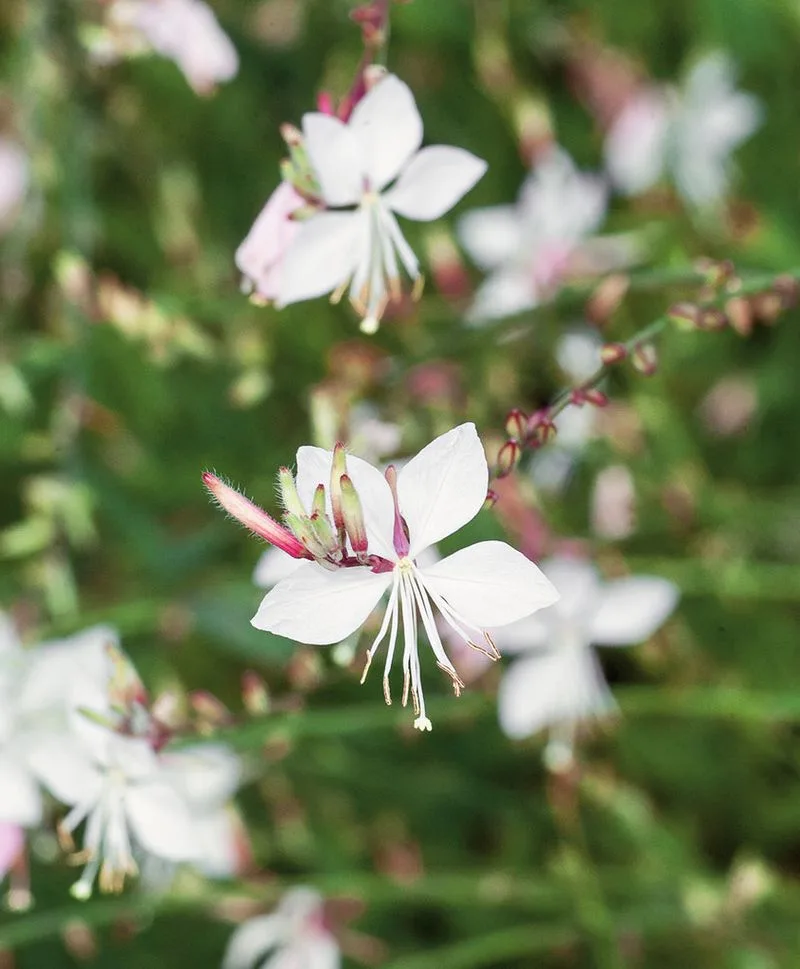
Imagine a tree that dances with the wind, its spiraled branches adorned with an array of colorful blossoms. The Whirling Willow is a sight to behold, capturing attention with its unique, twisting branches that sway gracefully. Its vibrant pink, orange, and yellow flowers are a feast for the eyes, while its sweet nectar is irresistible to birds and butterflies alike.
This enchanting tree offers a sanctuary to hummingbirds, who dart around its branches, and butterflies, who rest on its blossoms. The Whirling Willow transforms any garden into a whimsical paradise, inviting nature’s vibrant tapestry to flourish.

